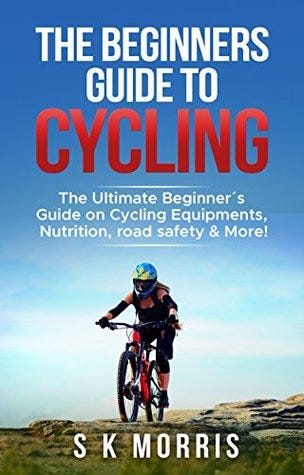This week, I delved deeper into the concept of bicycle highways. The cycling highways are also called "cycle superhighways," "greenways," "high-quality cycle paths," "through cycle routes," and "fast cycle routes."
I had the first-hand experience of traveling on one highway near my hometown. On this highway, there is less interference from other traffic. I often go on it to train myself. I compared it with different routes and found it most efficient for cycling. Yet, it is unclear how this cycling highway fits within the surrounding environment.
This highway could include more design elements to create more desirable cycling experiences. For example, it could consist of more signage, aesthetics, a sidewalk for pedestrians, more markings, etc., to attract more cyclists.
I will explore this highway more and share more stories about it in my subsequent posts.
Now, Let us discuss a new term this week.
This Week’s Term: FTP
FTP stands for Functional Threshold Power. It is the highest average power that we can sustain for approximately an hour. It doesn’t mean that you have to cycle for an hour to determine it, and FTP is measured in watts.
A typical fit cyclist might crank 200 to 300 watts as an average on a 20 minute FTP test.If you have the correct FTP, you are putting the right training load on your body to make improvements.
Cycling with these metrics is required only for higher performance expectations.
You can increase your FTP by going longer distances on weekends and stressing your cardiovascular and muscular systems.
During weekdays you can do a minimum of three solid FTP intervals. Try to be rested between FTP sessions. Measuring the FTP is not that important if you are training to remain fit and healthy. However, you can measure it to understand when you compare yourself with other cyclists.
I haven’t gone for an FTP test yet because I am more interested in long-distance cycling or brevets.
It isn’t the FTP that gets us around a big day on brevets; it is high a functioning aerobic system.
Going too deep or too hard produces excess lactate and utilizes our glycogen stores too quickly defeats the fit-for-purpose refueling strategy.
Book Review - The Beginners Guide To Cycling
The author has given accounts of various types of cycling activities, for example, adventure cycling, BMX, road racing, and off-road cycling. Cycling also can be for commutation and recreation.
Cycling should be our primary workout because it saves the cost of being healthy. Moreover, cycling has therapeutic effects, and it relieves stress and keeps us happier.
In later chapters, Morris has explained various types of cycling clothing. Cyclists can select the appropriate ones based on their purpose—the explanations are pretty detailed and helpful. Morris has also explored indoor cycling. It is pretty inspiring to read the views on how to have a healthy routine with the help of an instructor.
Investing in cycling accessories can be a tough choice for many of us. But, the book makes it easy to differentiate between various cycling accessories. I learned about the importance of gloves, head-wears, shoes, shoe covers, warmers, and coolers for speed and physical safety.
The workout is essential with the right amount of nutrition at the right time.
The last three chapters provide details on the main reasons for cycling injuries. The beginners can benefit from the author's tips on avoiding injuries while enjoying cycling.
This book is excellent for beginners and helps set the right foot the first time.
Stay tuned for more the next week!



